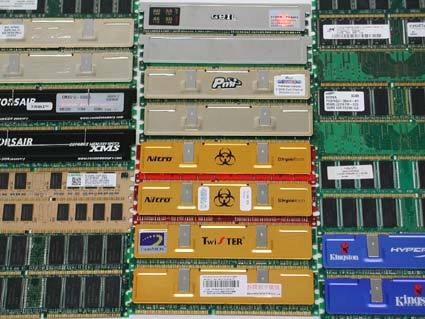THG Puts 13 Bleeding-Edge Memory Modules, 14 Mobos To the Match-Up Test
More Than 500 Tests For 13 Memory Modules Paired With 14 Boards
At the beginning of the year, we tested Athlon64 boards to see how they cope with double-sided memory modules, and the results were not uniformly pretty. A few of the test candidates simply did not pass the muster. However, vendors have had several weeks since then to hone the memory compatibility capabilities of their products.
We have now put 13 different memory modules and 14 motherboards to THG's exhaustive tests. The aim? To gain a comprehensive overview of how the latest Athlon64 (CO and CG steppings) mobos handle 1 GB of main memory.
The Athlon64's memory controller is subject to a restriction that should not be underestimated, especially by the ambitious user: according to AMD's specification, it does not have the capability to operate two double-sided memory modules with a 200 MHz clock rate (DDR400 alias PC3200). According to the data sheet, a maximum configuration of 166 MHz or DDR333 is allowed in such devices. But who is going to buy a powerful processor only to nip its potential in the bud with slow memory?
Single-sided DDR400 DIMMs with 512 MB per module, such as would be required for an optimally configured Athlon64 system, are scarcely available in specialist shops - instead the "Matched Memory" packages tend to dominate, which manufacturers construe as two guaranteed, identical DIM modules. However, the sophisticated-looking elements nearly always turn out to comprise mere 2x8 256 Mbit memory chips per module.
The pairs are actually useful for dual-channel operation, as two individually acquired memory modules may originate from different batches and may thwart operation with ideal timings. Of course, users tend to resort to this paired memory option, as this is ideal for possible dual-channel operation, and also the price for an individual 1 GB DIMM is almost always undercut. Furthermore, DIM modules with 1 GB or more only seldom handle fast timings.
We thus disregarded AMD's memory configuration specifications for the purpose of this test. As it turned out, two motherboards proved more than capable of working together perfectly with all the applied memory pairs. Even the use of two DDR400-DIMMs with components on both sides does not pose a problem for these boards.
Get Tom's Hardware's best news and in-depth reviews, straight to your inbox.
Current page: More Than 500 Tests For 13 Memory Modules Paired With 14 Boards
Next Page Memory Modules
Patrick Schmid was the editor-in-chief for Tom's Hardware from 2005 to 2006. He wrote numerous articles on a wide range of hardware topics, including storage, CPUs, and system builds.
